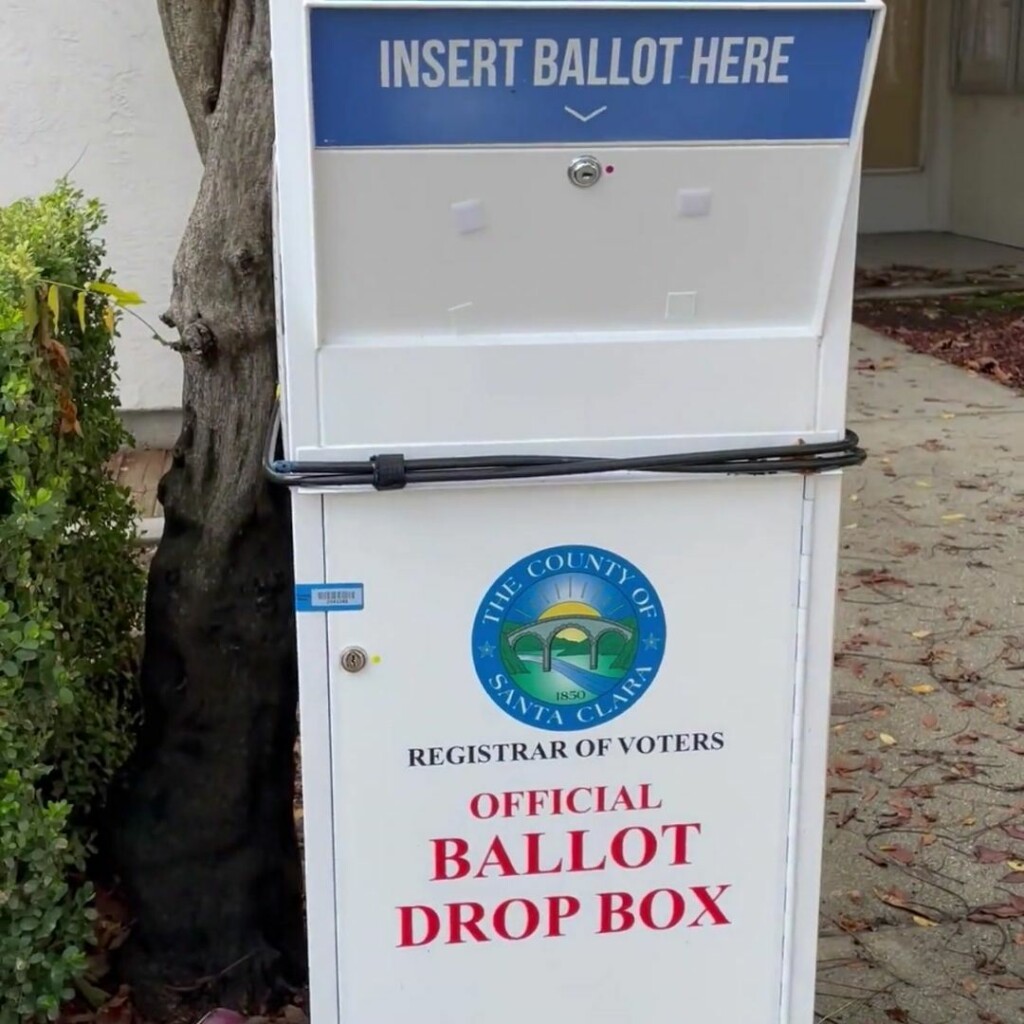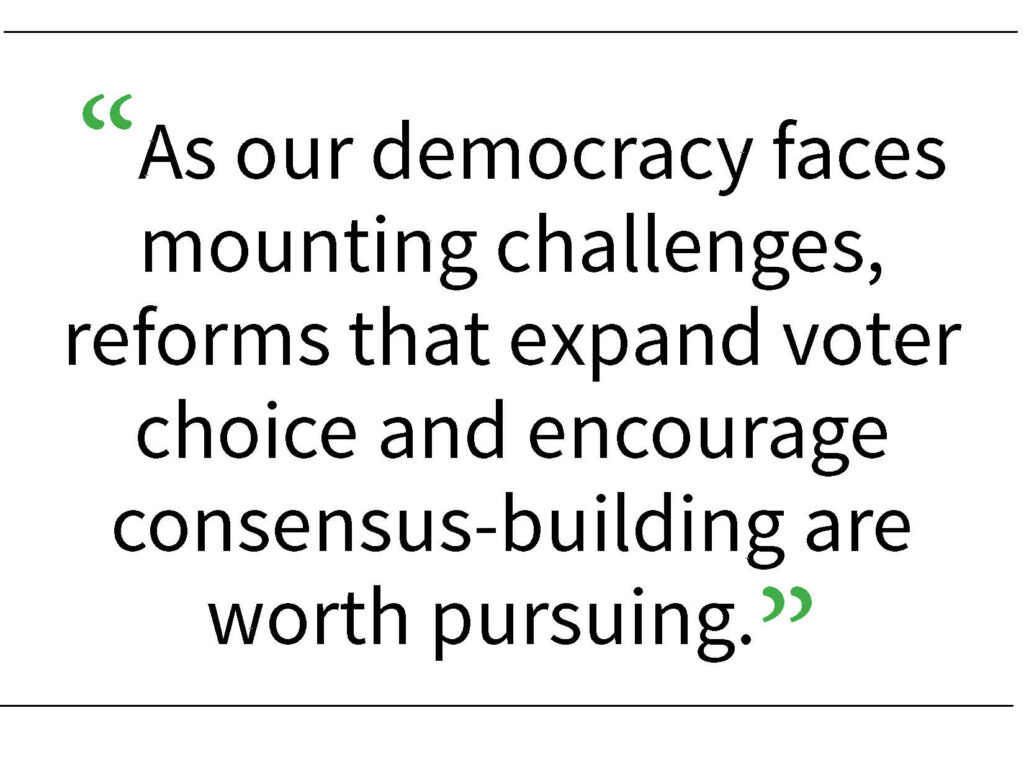Five of past 13 county elections were decided in the primary
This editorial is the opinion of Gilroy Life
Santa Clara County is poised to make history as potentially the first California county to adopt ranked choice voting for its elections. The Board of Supervisors is set to discuss this reform in August, which could fundamentally change how county officials are elected. While some opposition exists, ranked choice voting offers compelling benefits that warrant serious consideration.

A ballot box outside the Gilroy City Hall

Ranked choice voting would eliminate the need for primaries, instead allowing voters to rank candidates in order of preference in a single election. If no candidate receives a majority of first-choice votes, the lowest-performing candidate is eliminated and their votes are redistributed based on voters’ next choices. This process continues until a candidate emerges with majority support.
The Bay Area’s experience with ranked choice voting provides valuable insights. In Oakland’s 2010 mayoral race, Jean Quan won despite trailing in first-choice votes, demonstrating how the system can lead to unexpected outcomes. While this sparked controversy, it also showed how the alternative method can reward candidates who appeal to a broader base of voters.
San Francisco’s special mayoral election in 2018 saw London Breed become the city’s first African-American woman mayor, with voter turnout reaching 53 percent — significantly higher than the 36 percent statewide average for primaries. This election also highlighted how ranked choice voting can foster strategic alliances between candidates, as seen with Jane Kim and Mark Leno’s campaign cooperation.
In Berkeley, it encouraged more diverse candidacies. In a recent District 8 race, an unlikely candidate received more than 10 percent of first-choice votes, demonstrating how the system allows voters to support their true preferences without fear of wasting their vote.
 Oakland’s 2018 mayoral race saw incumbent Libby Schaaf win re-election with 53.2 percent of first-choice votes, potentially rising to 67 percent support if all rounds were counted. Schaaf praised the method for encouraging candidates to reach beyond their base and fostering more issue-focused debates.
Oakland’s 2018 mayoral race saw incumbent Libby Schaaf win re-election with 53.2 percent of first-choice votes, potentially rising to 67 percent support if all rounds were counted. Schaaf praised the method for encouraging candidates to reach beyond their base and fostering more issue-focused debates.
Notably, San Leandro saw increased voter participation after adopting ranked choice voting, with the 2010 mayoral race showing 11 percent higher turnout than the 2006 election and 54 percent higher than the 2006 June primary.
It’s crucial to note Santa Clara County has been laying the groundwork for this transition for years. In 1998, voters passed a measure ensuring ranked choice voting would not be prohibited. And in 2019, the county invested in voting machines compatible with the system. This foresight suggests a long-standing interest in exploring alternative voting methods.
Supervisors must engage in a thorough, transparent process of evaluation before the big decision is made. They should commission independent studies on the alternative method’s potential impacts, hold public forums to gather community input, and consider pilot programs before full implementation.
Ultimately, the goal should be to increase voter participation and ensure that election outcomes truly reflect the will of the electorate. If it can achieve these objectives without disenfranchising any segment of the population, it deserves serious consideration.
 Let’s also remember this type of voting is an experiment in democracy. The debate over ranked choice voting in Santa Clara County is more than a local issue. It’s part of a broader national conversation about how to strengthen and modernize our democratic processes. As such, the county’s decision could have far-reaching implications, potentially serving as a model for other jurisdictions across California and beyond.
Let’s also remember this type of voting is an experiment in democracy. The debate over ranked choice voting in Santa Clara County is more than a local issue. It’s part of a broader national conversation about how to strengthen and modernize our democratic processes. As such, the county’s decision could have far-reaching implications, potentially serving as a model for other jurisdictions across California and beyond.
While concerns about implementation in the county during a difficult budget year are valid, they should not overshadow the potential long-term benefits. Ranked choice voting could increase voter engagement, produce more representative outcomes, and foster a more civil political discourse.
As our democracy faces mounting challenges, reforms that expand voter choice and encourage consensus-building are worth pursuing.
Santa Clara County has an opportunity to lead the way on a voting system that better serves its diverse electorate. The Board of Supervisors should give ranked choice voting serious consideration as a path to elections that are more fair, inclusive and truly democratic.







